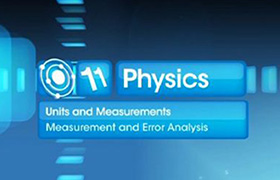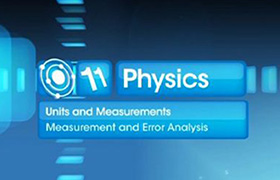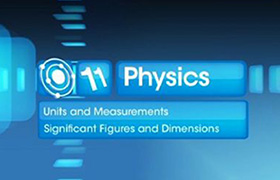NEET Class neet Answered
moment of inertia of a solid cylinder along an axis perpendicular to the axis of cylinder, we use parellel axis therom but i feel its wrong because the it can be applied only of the parellel axis pass through centre of mass of cylinder? can u please explain
Asked by bhupinderpal61 | 10 Oct, 2019, 12:21: PM
Parallel axis theorem
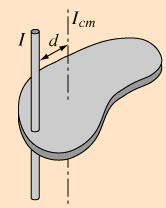
The moment of inertia of any object about an axis through its center of mass is the
minimum moment of inertia for an axis in that direction in space.
The moment of inertia about any axis parallel to that axis through the center of mass is given by
Iparallel-axis = ICM + Md2
Your confusion is which axis is passing through centre of mass ?
Correct answer is reference axis is passing through centre of mass .
Using this reference axis passing through centre of mass, we are finding the moment of inertia about another parallel axis.
Hence parallel axis is not passing through centre of mass.
Moment of inertia of cylinder about an axis perpendicular to the axis of cylinder and passing through centre of mass is given below
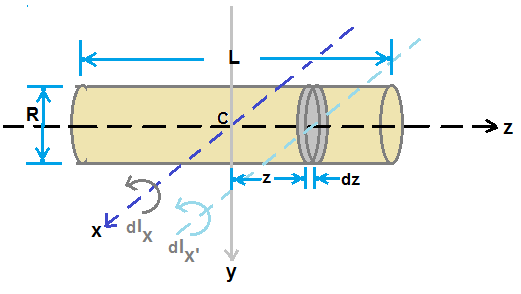
Let us consider a cylinder of radius R and length L and M be its mass.
Let the axis of cylinder coincides with z-axis of coordinate system.
We need to get moment of inertia about an axis perpendicular to axis of cylinder and passing throuh centre of mass of cylinder.
X-axis of coordinate system is the required axis of rotation as shown in figure.
Let us consider a thin disc of mass dm and thickness dz at a distance z frm centre of mass.
moment of inertia of this thin disk about axis of cylinder is given by
dIz = (1/2) dm R2 ..............(1)
By perpendicular axis theorem, dIz = dIx' + dIy' .............(2)
where x', y' axis are mutually perpendicular axis to z-axis . By symmetry, dIx' = dIy'
Hence dIx' = (1/2) dIz = (1/4) dm R2 ....................(3)
Moment of inertia given by above eqn. (3) is about the axis passing through centre of mass of thin disc.
Hence by parallel axis theorem, moment of inertia of this thin disc about the x-axis is given by
dIx = (1/4) dmR2 + dm z2................(4)
if mass is uniformly distributed, we have , dm = (M/L)dz ..............(5)
using eqn.(5), eqn.(4) is rewritten as, dIx = (1/4)R2(M/L)dz + (M/L) z2 dz ..............(6)
Moment of inertia of whole cylinder about the x-axis is given by

Answered by Thiyagarajan K | 12 Oct, 2019, 11:51: AM
Application Videos
Concept Videos
NEET neet - Physics
Asked by cmashudrana | 26 Jul, 2024, 10:51: AM
NEET neet - Physics
Asked by upparmanjunath70 | 19 Jul, 2024, 22:26: PM
NEET neet - Physics
Asked by zfaima704 | 19 Jul, 2024, 14:29: PM
NEET neet - Physics
Asked by shaikmuneerjaan | 18 Jul, 2024, 20:58: PM
NEET neet - Physics
Asked by nk4746870 | 15 Jul, 2024, 21:21: PM
NEET neet - Physics
Asked by dasmyton | 09 Jul, 2024, 22:46: PM
NEET neet - Physics
Asked by shobhaguduru02 | 09 Jul, 2024, 20:21: PM
NEET neet - Physics
Asked by kashinathpaikrao89446 | 09 Jul, 2024, 10:46: AM
NEET neet - Physics
Asked by dshyamala44 | 08 Jul, 2024, 21:05: PM
NEET neet - Physics
Asked by jagadishshnkr | 08 Jul, 2024, 20:50: PM



